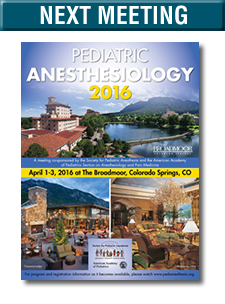Outside the Operating Room: Climbing Denali
(Part 2)
By Michael J. Mulick, DO
Children’s Hospital Los Angeles
Los Angeles, CA
Read Part 1 in the Fall 2014 edition of SPA News
DAY 11 - Move to Camp 4 (17,200’)
After several days of rest and acclimatization, we were ready to move to high camp. We ate heartily, packed up our gear, and roped in. We made our way to the headwall. This steep wall rose nearly 1,000 feet up to a colossal ridge, the West Buttress. This route, discovered by Bradford Washburn, is the most popular route up Denali. We ascended ropes called fixed lines using mechanical ascenders and ice axes.
One by one, we attached our ascender devices into the fixed line and started climbing the headwall, our steepest section of expedition thus far. I loved this part. This was iconic high altitude mountaineering: four climbers roped together on a 55-degree pitch of ice, with heavy backpacks. I was breathing heavily, but the panoramic views of the Alaskan range against the blue sky were so beautiful that I felt at home.
After a long steep climb, we emerged on top of a narrow ridge and enjoyed a magnificent 360 view of the Alaska range. Jon Krakauer was up on the ridge as well with the North Face team of elite skiers and snowboarders. They were making laps skiing down Rescue Gully and the Messner Couloir. It was exciting to see him on the mountain since many of us were inspired to climb after reading Into Thin Air.
We had to keep moving as our fingers and toes were already cold. It was hard to believe that it was so cold on such a calm and sunny day. It made me concerned about if and when the weather would change.
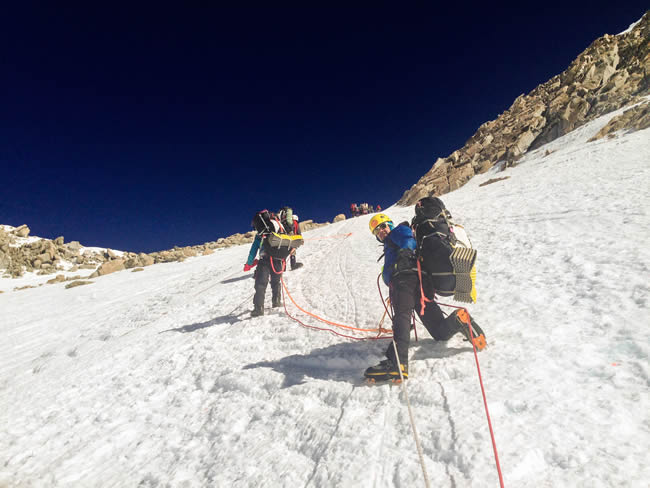
Picture 1: My team above me while climbing the headwall around 16,000'.
The route along the ridge at 16,000 feet was the most beautiful alpine climbing I had ever done. The ridge was a thin spine with sharp several thousand foot drops on either side. It was impossible to stop and take photos while climbing the technical sections of steep ice. It was also difficult to drink and eat enough, and we were all thoroughly worked by the time we got to high camp. Once we arrived, we cut and carried heavy ice blocks and assembled a large wind barricade.
By the time we erected our snow wall and set up tents, I had a headache. I rely on these high altitude headaches to warn me if I have pushed myself too hard or haven’t hydrated enough. I no longer take acetazolamide for acute mountain sickness (AMS) prevention. However, I did take some ibuprofen, also a good preventative measure. I found on previous climbs that acetazolamide, a carbonic anhydrase inhibitor, caused too much peripheral neuropathy, but it helps reduce Cheyne-Stokes respirations. I have experienced this irregular breathing before in the Himalayas when I woke up in the middle of the night gasping for air after an apnea episode. I tried not to worry and spent the rest of the day and night in my sleeping bag.
One less tent to save weight meant we tripled up. Less room made the group a little irritable at first, but we made it work. Sleeping was hard at the new altitude, and it was very cold outside so there was nothing to do except stay in the crowded tents and try to stay warm. Life on the mountain just got a lot harder.

Picture 2: Late evening after arriving at high camp. Denali Pass is visible in the far upper left.
DAY 12 - Rest Day at Camp 4 (17,200’)
The wind was vicious all night. The winds continued throughout the day, so we remained in our tents. I felt restless so I got dressed into every layer of clothing I had, went outside, and delivered hot water to my teammates in their tents.
We spent most of the day sleeping, reading, and listening to music. It was cloudy and our solar power chargers did not function as well. Everything is more difficult at high altitude. Everything. The tent was crowded. It was hard to get in and out as well as get boots on and off. We got winded just rolling over in the tent. My toes were cold all day, even in the sleeping bag.
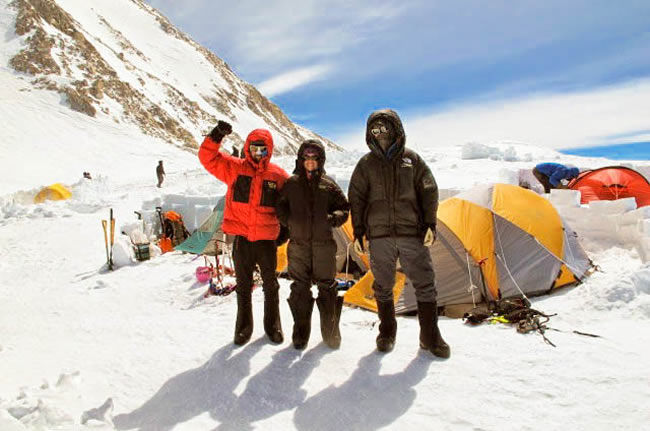
Picture 3: Trying to avoid cabin fever at high camp, (17,200')
DAY 13 - Summit Day
We had another brutal night. I was being snowed upon with ice crystals that formed on the tent ceiling caused by condensation from my own breath. We got word over the satellite phone around 8:00 am that the weather looked stable and we decided to make the attempt.
I was so busy checking over my gear that I did not eat nor drink enough. And to make matters worse, my feet would not warm up. Nobody should ever leave camp with cold extremities and if I couldn’t warm up, I would miss my summit chance. I walked around camp a few times and loosened my boots a bit and then put toe warmers inside my liners. I was desperately trying to warm them. I thought to myself, “how could I possibly climb this mountain if I couldn’t even keep my feet warm in camp?” A few minutes after loosening them and getting my legs moving, they felt a little better.
It was a very cold start. We tied into our rope and departed camp at 10:45 am. I had worked so hard getting my feet warmed up that I had a coughing fit just a few minutes out of camp and I was already breathing heavy. I tried to remain calm.
We headed up the autobahn to the infamous Denali pass, known for high winds. Previous expeditions have been caught there in storms and have perished. The autobahn was a long and steep traverse named after a tragic fall by a German team. This traverse had seemingly endless pickets wedged into the ice with an attached carabiner through which we passed our rope. Each anchor provided protection such that the rope team would not take a death fall.
It took a very long time to get to the top of Denali pass, as our team was cold and tired. Climbers will take an average of eight to ninehours to reach the summit from high camp and half that time coming down. At the top of Denali pass we took our first break. The cold temperature and thin air were debilitating. I forced as much water down as I could. I changed into my gloves to have more dexterity for eating snacks. While I climbed I used my big mittens and inside each of them were chemically activated hand warmers. The price was too high to let my hands get cold.
During the break, we discovered that one of our teammates was struggling and needed to descend. He felt terrible and was having vertigo. This was beyond just the early stages of AMS. If he didn’t descend immediately, it was possible that he could get worse. Occasionally a climber may have no symptoms before having high altitude cerebral edema. Vertigo also increases the risk of tripping and falling. Larry escorted him safely back to high camp.
We all discussed whether the entire group would continue. We verified that everyone else was well enough to proceed. One of my teammates dropped one of his water bottles. As we saw the bottle drop thousands of feet off Denali pass, we decided that any more mistakes meant we would turn around. I definitely felt tired but I didn't want to turn around. I knew I was still strong but I had to drink and eat in order to prevent a cognitive and physical decline. Since my life depended on it, I started eating and drinking like a ravenous animal. Suddenly, I felt better. We reached a long flat area called the Football Field. I had more food and water. My food was hard as rocks and my water was ice cold. The air was so cold in fact, that we decided we would not take another break until we summited and circled back to the same sheltered position in the Football Field.
We ascended a section known as Pig Hill which was steep and technical. We reached the knife-like snow spire summit ridge and began a spectacular and terrifying final approach. Even if I was capable of snapping a photo of this ridge, it would not have done justice. There were steep five thousand foot drops on each side. The foot placements were at times the width of my boot.
The wind was cranking at around 30-40 mph. I estimated the wind speed to be that high because snow and our rope were blowing sideways. My balaclava gorilla mask was frozen to my skin. My goggles had fogged up earlier when I got too warm and subsequently froze. They were nearly useless. I had a hard time seeing my foot placements. On one occasion I looked out to the horizon and saw the entire planet below me. The foreign landscape was so beautiful, but I could not stop and enjoy a long look because I was so focused on my foot placements, my breathing, and rope management.
We inched closer at a snail’s pace. Each step was taken very slowly, yet I was breathing as if I were running. Fresh energy came from knowing we were close. I couldn't believe we were nearly there. And finally, there we were, at the top of a colossal snow summit, 20,322’ above sea level. We felt very alone and very cold. For a brief moment we were relieved and felt safe. I tagged the marker and stood on the true summit for about 10 seconds. We all huddled together on a larger flat area just below.
I just cannot express in words how strange and terrifying it felt to be standing there on that very foreign and inhospitable part of the world. The time of our summit was 7:05 pm. It was June 22, two days after the summer solstice, one of the longest days of the year in Alaska. It was late but we had all the sunlight we needed. We had a view you can only get from your airplane window at cruising altitude, and I could see hundreds of miles in every direction. It was so cold that I didn't even take a single photo. Neither did most of my teammates. It was just too extreme.
I didn't want to take the risk of getting any colder than I already was. Every second of our rest breaks needed to be used for eating, drinking, and keeping warm. These needs were already violated. Fortunately, Jared was kind enough to snap a photo of me.
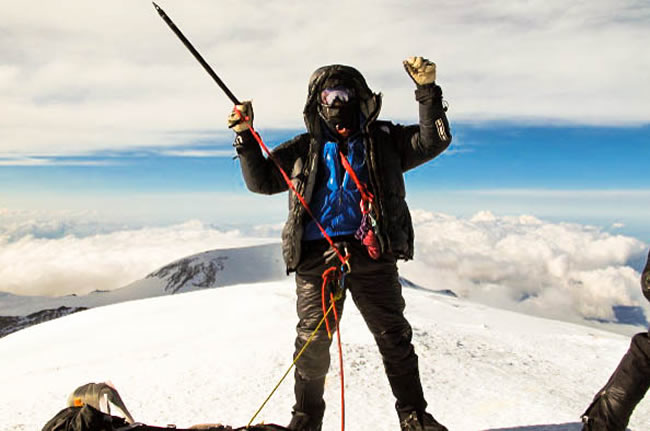
Picture 4: My Denali summit photo thanks to Jared Harris. 20,322' at 7:05 pm, June 22, 2013
Before I led the team down the ridge, I had to figure out how I was going to see the route. My goggles were useless. I switched to my sunglasses and although it was colder on my face, I could indeed see. Climbing back down that knife ridge with nobody in front of me was one of the most intense experiences of my life. Every single cell in my body was present and alert.
Clipping and unclipping required touching the carabiners which made my fingers cold. My hands were the coldest part of my body but overall they were still good. I was thankful for the expedition-weight goose down parka and pants, or “puffies” as we liked to call them. My puffy pants were over my harness and they kept sliding down. My backside was occasionally exposed to wind while bending over to clip and the team later told me that it made them laugh and kept their spirits up.
Soon we were back in the football field and protected from wind. The top priority here was to eat, drink, keep hands, toes, and face warm. And in few minutes we were off again. After a long time of just methodically moving along, one foot in front of the other with no talking, we were back at Denali pass.
Time moved forward in a strange way. It seemed to take forever, but then after arriving at our next rest I didn’t seem to have perceived the hours that passed. It was the state of psychological flow, that state of consciousness of performing tasks flawlessly without thinking. We were exhausted but doing well and in the flow.
My hand warmers were losing their effect and I concentrated on keeping my hands warm. One of my teammates developed frostbite on his fingers. The descent down the autobahn seemed to go on forever. It was a dangerous stretch of terrain and I clipped every single piece of protection, many times without speaking. Normally, climbers would indicate to their rope team that they are anchoring with a verbal cue. After many hours of this, we all knew the visual cues and we stopped talking.
At each brief pause, I adjusted my partially frozen glasses and swung my left arm around in circles to promote blood flow to my hand. We all fell into a rhythm and the rope team descended in perfect unison clipping and unclipping while taking thousands of precise steps. It made me think about how in residency, I often had to remain vigilant while exhausted during all-night trauma cases. This climb was much more difficult than I thought, and much longer than I have ever had to stay focused. This is what we trained for, not just to reach the summit but to make a safe return. The hundreds of workouts and a year of preparation helped us push our freezing, dehydrated bodies to our physical and mental limit.
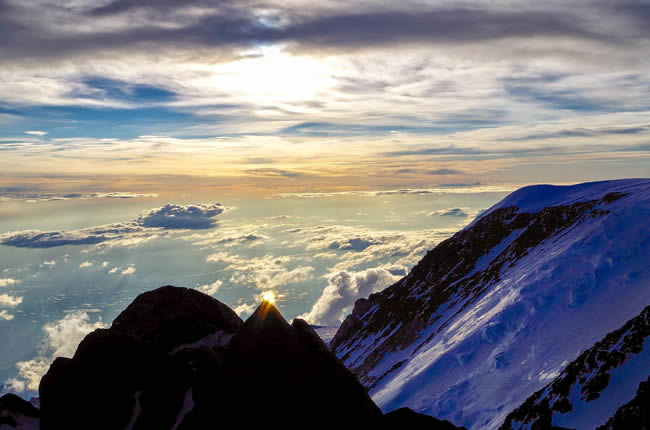
Picture 5: View from Denali Pass after summiting. Courtesy of Kim Hess.
After what seemed like an eternity, we reached our camp. It was midnight and there was an amazing glow of amber on the mountain. We all hugged each other with the little energy we had left. I didn't have much of an appetite but I tried to force down some food. I thought about my time with my college cross-country and swim teams and my endurance triathlons. I think this was the hardest and longest I have ever worked. I collapsed into my tent. We checked our O2 sats with a handheld pulse oximeter and we ranged from the mid 70’s to mid 80’s. We guzzled hot lemonade and celebrated our safe return to high camp.
DAY 14 - Descend to Camp 3 (14,200’)
There’s an old saying in mountaineering: most accidents happen on the descent.
I was still exhausted and my appetite was still poor. I could not eat much. It’s a terrible thing knowing you need food and are physically unable to eat. I understand why my hypoxic cardiac children do not feed. Many of these infants can’t even leave the hospital without a gastrostomy tube. I felt fortunate because my appetite would come back as soon as I descended.
We focused on getting out of high camp quickly. We descended the ridge with tired bodies. There was high risk of rockfall late in the day due to the near record high heat wave. It didn’t feel warm on the upper mountain, but the lower mountain had changed in ways not previously seen by experienced guides. The lower Kahiltna glacier was opening up very early and rocks were falling off the 16,000’ ridge and at Windy Corner. The clock was ticking and we needed to move fast.
The views on the ridge were once again incredible. It was easier going down this time so I managed to take a few photos. Descending the fixed lines was painfully slow. We were behind two or three slow groups who spent all their time playing with their ascenders. We used a hand belay technique that was much faster but not without significant risk.
We had to descend over a very large bergschrund, which is a large open crevasse on a steep incline. The hole was bigger than it was a few days ago and I wondered if we should go around right of the hole. There should have been steps. Our rope team made it over the crevasse and felt relief. For sure, this was one of the most dangerous points of the expedition.
Once my team was off the fixed line, we were moving nicely down towards camp when I heard screaming. It was Kim. Something horrible had happened. My biggest fear was that she was hit by a rock. I looked to see if runaway boulders were crashing towards us. Surely there would be, and my body became lighter, ready to jump out of the way or duck. But there were none. She screamed “help me, help me!” My stomach sank. She fell into the crevasse. Over the next few minutes the visibility had diminished significantly as the sky intended to darken the mood. What had actually happened was that as she stepped over the bergschrund, the snow step broke and she fell inside the crevasse and broke her arm. Not only did she get hurt but we were now all stuck in the impact zone of rock fall.
Her rope team easily leveraged her out. After putting her arm in a sling, Larry used a short rope to control her speed as she walked down on her own. I led the team back to camp in a blinding whiteout. It was calm and the temperature pleasant but very hard to see. We walked in a thick cloud with no possible way to know where camp was save for our route wands placed to mark the safe path. And I will forever remember how important it is to be sure the wands are close enough.
It was eerie when I came upon a wand and still could not see the next. I continued to walk just a bit further until it would appear. We arrived at camp and took Kim to the medical tent. There was a paramedic on duty and he placed an intravenous catheter and administered morphine. I took for granted the simple act of providing analgesia. When she got her morphine, the whole team felt better.
I consulted with the guides and the paramedic and offered my advice as a physician. Kim’s injury occurred as the rope twisted around her forearm. This mechanism was complicated and I postulated that it made several fractures at her hand, radius, and ulna. There was no neurovascular compromise at that moment, but I recommended she not hike out. It was already a risky descent past Windy Corner and through the lower Kahiltna. It would be extremely difficult doing the descent with only one good arm. The other reason for her to be flown out was that I knew she was going to need an urgent open internal fixation.
DAY 15 - Rest Day (14,200’)
We spent all day resting in the tents, sorting gear, and wondering if and when Kim was going to get a helicopter flight out. It was cloudy all day which precluded helicopter flight.
After many hours we got word that a helicopter was going to come. It was a great sound to hear that helicopter roar through the lower range. It seemed to take a long time after we first heard it to when we were able to see it far off in the distance. The helicopter made its approach and turned our calm weathered camp into a wind tunnel. Kim hopped on quickly and they rapidly flew away at 8:45 pm.
We made a plan to depart at 2:30 am and make it to base camp in a single hike. I felt uneasy because rocks fell last night around 3:00 am, a time when it’s traditionally safer because colder temps held the rocks in place. We had never considered rockfall was a possibility, as historically it’s not an issue. We were in a bad spot since we couldn’t wait for it to get better. It was getting warmer every day and more dangerous. The lower glacier was opening up and we needed to get down before sunrise.
DAY 16 - Final Descent
We were all up at 12:00 midnight and the team was silent. We departed promptly at 2:30 am with full packs and sleds. The route was totally different and took a circuitous path around new crevasses down to Windy Corner. I could not believe it, but we had to travel immediately adjacent to the rock wall to stay away from the new crevasses. I saw fallen rocks everywhere.
We all had to periodically stop and probe for solidarity in the route. The lower altitude rich air brought us new strength. And the downhill travel was so fast that it was very hard on our knees. As we passed through the worst section, I kept looking up at the rocks. It was the darkest part of the night, which at this time of year wasn't really dark but foreboding. The big rock formations above us seemed like sleeping mythical giant creatures and I was trying not to wake them up as I snuck by.
I readied myself to jump in the event a boulder came at me. We reached a point where we were stuck, because the route was terribly destroyed by the heat exposure the previous two weeks. We could only move through the snowfield over solid snow bridges. Until we found our safe route, we were just waiting in the line of fire of the huge rocks. Finally, we found the way and we moved beyond danger. Our pace was like lightning. Another half hour and we were down Squirrel Hill.
Finally, we had a break above Motorcycle Hill. I was sweating and frustrated with my sled, which was sliding out of control. Sweating on the mountain was a big problem and a rookie mistake. It meant either my layers were too warm or I was working too hard. Very soon I turned from hot to cold. We were descending at a blistering pace and the work was extremely hard.
Soon we were down Motorcycle Hill. It was amazing how quickly we could rapidly descend the same terrain that took two weeks to go up. We arrived at our 11,000 camp cache. We dug it up and it was a little bit like Christmas morning. I found my deodorant, some old food, all our snow shoes and some clean socks and underwear from our first week on the mountain. We took a generous break, put on snow shoes, put the crampons away, and departed.
We made great time down to 7,800’ camp. This time the route was pretty smooth and safe. And shortly after that we had arrived above Ski Hill. The morning sun was getting higher but still behind the mountain. It was still nice and cool but we could feel it getting warmer. We were nervous. There were many more crevasses now that we had not seen on the way up.
The sun was almost on us. We all remained very concerned about getting safely through the crevasse fields. A few months earlier I read Art Davidson’s book, Minus 148 Degrees, to understand what Denali had in store for me. I thought about his teammates dying from falling through crevasses exactly where I was walking. I was punching through the snow down to my knees.
Every time I punched through the snow I wondered if this would be the time I would go all the way in over my head and discover a labyrinth of snow caves below. The snow was extremely soft. Finally, like an uninvited guest, the sun popped over the mountain and the temperature instantly soared. On the next rest break we had to de-layer. We were behind schedule and the snow bridges were weakening at an even faster rate.
We had plenty of energy now with the abundance of oxygen and we raced through the maze of crevasses. I could see Heartbreak Hill approaching. It earned this nasty moniker because the very last hour of everyone’s expedition was uphill to the airstrip. My back was killing me. I had an extremely heavy pack and heavy sled. Every single second of going up Heartbreak Hill was absolutely excruciating. I wasn't even breathing heavy from the work, I was just hurting from the pack digging into my hips and back. I kept trying to talk myself through it. I played a little game where I would try and calculate how many minutes it would take us to reach the airstrip just to distract myself. I tried to trick myself into making the time pass quickly, but it wouldn’t.
We arrived at the old airstrip cache and had a very brief sigh of relief. Unfortunately, since it had been so warm, they had moved the airstrip up glacier another half hour. We had to dig up our cache and then go just 30 more minutes uphill. Fortunately for us, a plane just landed and we wondered if they would wait for us. We hurried and we were in luck.
Once we got to the plane, we loaded it as fast as we could. Lisa the base camp manager took a few photos of us, and the next thing I knew we were flying off the glacier. I reclined in the soft seat and as I looked down at the glacier below us, my eyes welled up and I fought back the tears. The intense two and a half weeks that I spent on the mountain were over. Most of it was good. But it was extreme. And I could feel the tension giving way as I thought fondly of burgers, beer, a warm bed, a shower and my girlfriend, Renée.
She didn’t know it, but high up on the mountain I realized just how precious and fragile life is, and decided that I had waited long enough; I would soon ask for her hand in marriage. It was so peaceful looking at the mountains give way to forest that I almost fell asleep. I fought back the sleep and I wished that moment could have lasted forever.
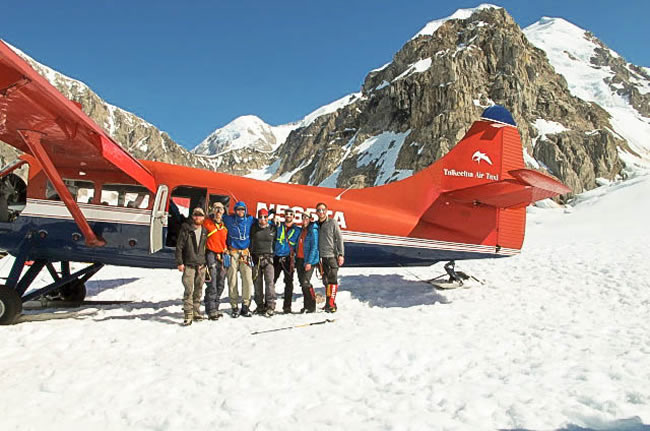
Picture 6: The team poses for a photo at base camp (7200') before our flight home.
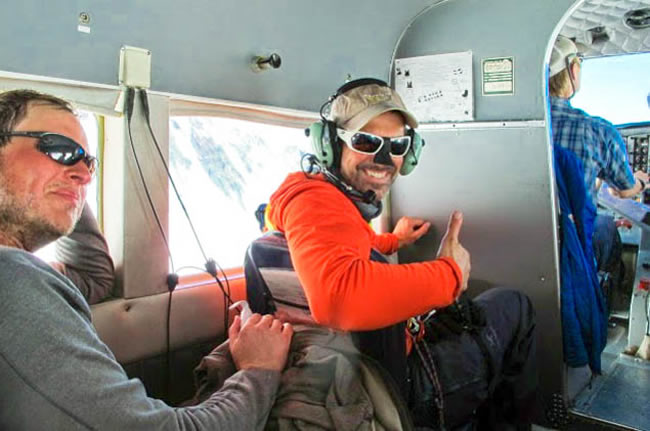
Picture 7: On the plane back to Talkeetna. The team is excited about being safe, and is ready for a hot shower and a meal.
We were back in Talkeetna in just an hour. It's a great feeling to come back to civilization after being away. I felt that before on previous expeditions, and also after my missions with Doctors Without Borders. All of the luxuries of life are instantly at your fingertips. It was bittersweet as we worried about Kim.
The team went over to the Twister Creek Brewery and started eating. My appetite was fully restored and my metabolism was off the charts. In my entire life I can’t remember a Thanksgiving dinner that compared to my feast. I ate two full sized dinners and two desserts followed by beers and pizza.
JUNE 26 - The Day After
I slept in as if it were going out of style. I felt wonderful. My body was sore, yes, but I felt better than I ever have in my life. I got on a plane and said farewell to the beautiful and great state of Alaska. Our summit was completed a few days after the 100th anniversary of the first Denali summit.
Epilogue
My Denali expedition made me think about my life and my interest in climbing. A lot of people ask me why I climb. The views from these remote places are so spectacular and enjoyed by so few. It’s gratifying to accomplish something that requires every bit of physical and mental strength. I found that the rewards stayed with me long after my climb.
My everyday problems are not really that bad. Survival on the mountain demands strict attention to only the basics of sustenance: if you don't drink, eat, and stay warm, you can’t survive. If you don't watch closely where you step, you fall. The issues are dangerous, but rather simple, and put everyday life into a new perspective.
I appreciate more than ever a bed, an indoor toilet, good food, and climate controlled homes. I came back to work taking care of sick children and appreciated the limits and abilities of my body. My climb on Denali gave me a new perspective on life and changed me. It made me a better and happier person, both inside and outside the operating room.



